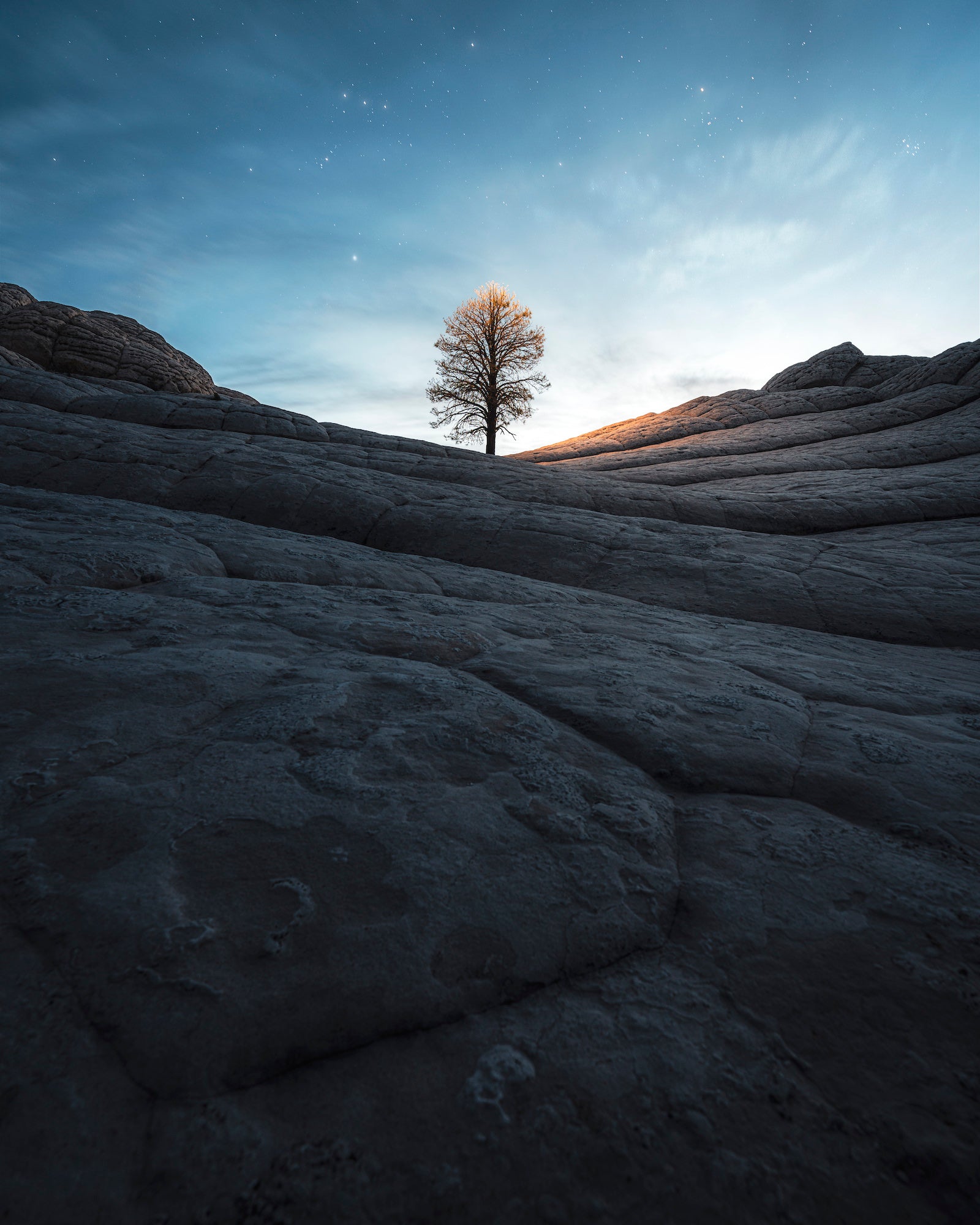Ryan Ditch (@ryanditchphoto) is a Seattle-born, Scottsdale-based landscape and commercial photographer with a lifelong passion for nature and urban landscapes. “Living up in the Pacific Northwest and now the American Southwest – it’s a must to photograph the abundance of beauty," he says. "However, you're just as likely to find me roaming city streets around the globe. I’ve been photographing seriously since 2016 and have poured my heart and soul into this craft.” We saw this image he took of a lone tree at White Pocket in Arizona and a couple things came to mind. First was the powerful and haunting riffs of U2's "One Tree Hill" and the other was wanting to learn more about how he created it – keep reading as Ditch shares his story behind the shot.
Product Preview – In This Article You'll Find:
–Sony Alpha 7R IV
–Sony 16-35mm f/2.8 G Master
–Sony RMT-P1BT Wireless Remote Commander

Photo by Ryan Ditch. Sony Alpha 7R IV. Sony 16-35mm f/2.8 G Master. 15-sec., f/2.8, ISO 800
A Lone Tree & A Drone To See
After seeing a photo of this lone tree in Arizona, I knew I had to visit. This was long before the days of AI and I still couldn't believe this was a real scene. On the long drive from San Diego, CA where I was living I decided on a night shot since Orion's Belt would be lining up. I was heavily influenced by Reuben Wu at the time so lighting up the tree with a lone exposure drone circle was going to be my play. Turns out drone circles are incredibly hard when it's even slightly windy so after many unsuccessful tries I decided to simply light the tree up using the drones auxiliary light. This turned out to be my favorite shot and instantly loved the interstellar vibe it gave off.
Using A Sturdy Setup For Long Exposures
I've been using Sony cameras for the last five years, specifically the A7R series to maximize the image capabilities. With the Sony Alpha 7R IV's 61 MP I am able to use additional cropping if need be, offer poster size prints and capture as much detail as possible. One of my favorite features on the Sony Alpha 7R IV is focus peaking which helps immensely for night photography. Paired with my camera was my Sony 16-35mm f/2.8 G Master. Since this was a night photo I wanted it to be wide to encompass the starry sky.
Anytime I am shooting long exposure photos I use my Sony RMT-P1BT Wireless Remote Commander. This helps eliminate any shake from manually pressing the shutter button, and also allows me additional freedom from your standard cable release. For this specific shoot it was critical since I was also flying my drone while taking photos.
I exclusively use SLIK Tripods and have for almost a decade. The sturdy build, packability and lightweight material make it essential for hiking. By using the tripod I was able to compose and fine tune my composition for long exposure images. I almost always use a tripod even if conditions or camera settings don't require it. I like to take multiple images of the same scene based on atmospheric elements like light, water, plants and animals. Then in post if I want to combine parts of photos to create the best image possible I can.
Finding An Eye-Catching Composition
I chose this composition to maximize depth. By lowering the tripod I was able to use the ground to draw the eye in and up through the frame. Additionally I loved the idea of the tree being elevated which gives this ascending feel up into the light. I instantly got Interstellar vibes as if the tree was being beamed into an alien craft of some supernatural space.
The only challenge for this shoot was the wind. It was very minimal, but posed an issue when trying to create light circles with my drone. If there is even the slightest bobble in the drone it will show in the image. For that reason I chose to simply light up the tree using the drones auxiliary light. After the shoot I ended up liking this better rather than the light circle because it left more to the imagination. This direction was chosen as well to capture Orion's Belt and the remaining light from the previous sunset.
Quick Finishing Touches
The editing process was fairly straightforward. I used Adobe Lightroom to edit basic tones and colors, then Adobe Photoshop to remove the drone hovering above the tree and apply a soft glow.
See more of Ryan Ditch’s work on Instagram @ryanditchphoto.



